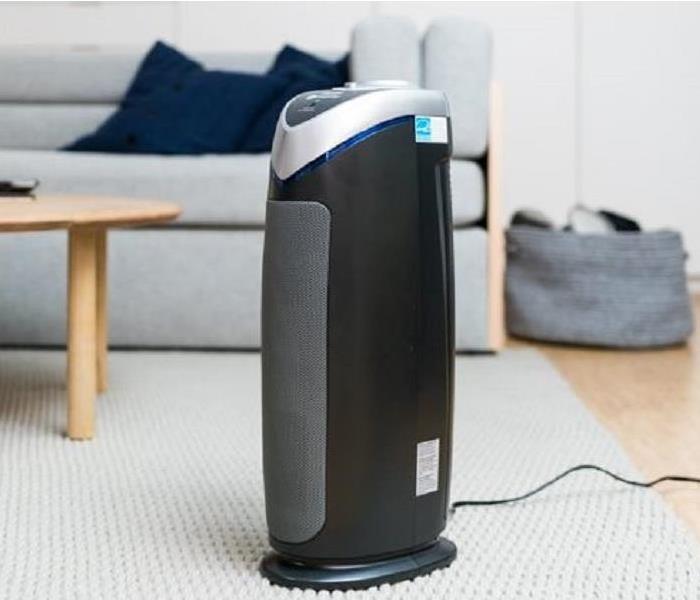Will my air purifier prevent mold?
5/23/2018 (Permalink)
Air purifiers have improved in many details over the years. They can reduce/eliminate dust particles, pollen, bacteria, as well as mold spores.
There are two types of air purifiers: Active and Passive types. Active air purifiers use ionization to clean the air. Passive air purifiers use filters to capture particulates traveling through the air. There are some newer models that perform a combination of both.
Ionization occurs when the purifier creates negative ions, allowing the airborne particles to be attracted to a plate or grid, similar to static electricity. These particulates can be cleaned off at a desired time.
Most purifiers that use filters use HEPA filters, or High Efficiency Particulate Air filters. These filters, first designed in the 1940’s for use on the Manhattan Project, collect very tiny particles moving through the air. How tiny? Particles as small as .3 microns are captured by the series of filters. To put that size in perspective:
- A human hair is approximately 60 microns wide.
- Mold spores range from 3-10 microns wide.
- Red blood cells are about 5 microns wide.
Remember, mold spores are everywhere; they are on the trees, bushes, and plants outdoors, and get carried indoors each time a door or window is opened. This also means that mold spores are trapped behind paneling, drywall, under carpets, etc inside your home. Once excess moisture triggers those mold spores, colonies will begin to develop.
So, even though air purifiers have improved indoor air quality, it doesn’t mean it sterilizes the air completely. If you have suffered a water damage, or have excess condensation in a particular area, mold will continue to be an issue.
If you suspect you have mold in your home or business (a musty smell could mean you have mold actively growing), call the experts at SERVPRO Bedford Park/Burbank at 708-430-3600 and schedule an inspection.




 24/7 Emergency Service
24/7 Emergency Service
